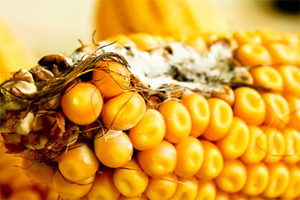Biomin: Co-occurrence of mycotoxins is very common

Mycotoxins usually do not operate alone, but occur together, reinforcing the effects they have on animals. That was one of the conclusions from Karin Nährer, product manager, Biomin, Austria, at the Mycotoxins in Focus symposium, given during VIV Europe, in Utrecht, the Netherlands, on May 21. The symposium was jointly organised by Biomin and AllAboutFeed.
The co-occurrence of mycotoxins can lead to stronger effects on animal health than when the mycotoxins occur alone. She said that in 2013, in 42% of all samples researched from all over the world, co-occurrence proved to be case; in up to 60% of compound feed, more than one mycotoxin was found to exist.
Nährer was able to give such precise figures, as she used data from Biomin’s annual Mycotoxin Survey, evaluating the global presence of mycotoxins in 2013. It showed that also last year, mycotoxins were ubiquitously present in feed, that percentages of contamination usually are relatively stable, but concentrations may vary, possibly linked to weather conditions.
The animal nutrition company has been performing the survey since 2004. “Over the years, there were differences concerning the prevalence of mycotoxins worldwide. As an example DON was most frequently detected in North Asia, North America and Central Europe with% positive samples exceeding the global average of 57%. In addition, also the highest average DON contamination’s were detected in the above mentioned regions. However, global trade influences mycotoxin distribution and makes prediction of the toxins’ occurrence in commodities challenging”, Nährer pointed out.
Special attention during the Mycotoxins in Focus event went to deoxynivalenol, as this is one of the more present mycotoxins currently. Biomin’s André van Lankveld spoke of the effects on pigs, where Luca Vandi, Biomin, Italy, focused on mycotoxin problems in poultry.
Altogether, the event attracted over 80 people.











